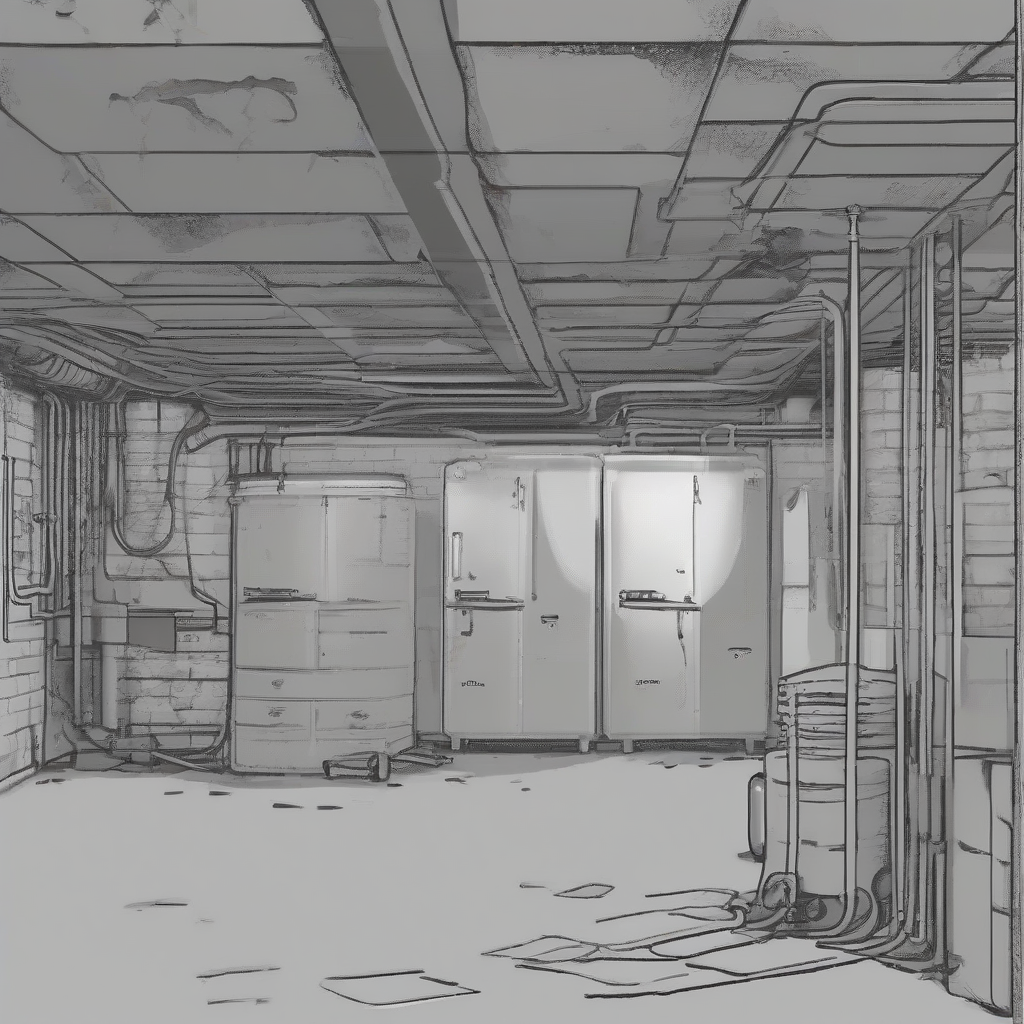Conquering the Creep: A Comprehensive Guide to Basement Mold Control
Basements, often damp and dimly lit, can be breeding grounds for mold. This comprehensive guide delves into the multifaceted world of basement mold control, offering practical advice and preventative measures to safeguard your home and family’s health.
Understanding the Mold Menace
Mold is a ubiquitous fungus thriving in damp, dark environments. Spores, the reproductive units of mold, are constantly floating in the air. When they land on a moist surface with sufficient nutrients, they germinate, forming colonies visible as fuzzy patches or discoloration. Various types exist, some posing greater health risks than others. Common culprits in basements include Stachybotrys chartarum (black mold), Cladosporium, and Penicillium.
Mold growth isn’t just unsightly; it can trigger allergic reactions, respiratory problems (asthma, coughing, sneezing), and, in severe cases, more serious health issues. Therefore, proactive mold control is crucial.
Factors Contributing to Basement Mold Growth
- High Humidity: Excessive moisture in the air provides an ideal environment for mold to flourish.
- Water Leaks: Leaky pipes, cracks in the foundation, and inadequate drainage are major culprits.
- Poor Ventilation: Stagnant air prevents moisture from evaporating, promoting mold growth.
- Condensation: Cold surfaces in the basement, like pipes or walls, can collect moisture, leading to condensation and mold formation.
- Organic Materials: Wood, drywall, carpet, and insulation provide nutrients for mold to feed on.
- Lack of Sunlight: Dark, poorly lit spaces hinder the natural drying process, promoting mold growth.
Identifying and Assessing Mold Problems
Early detection is key to preventing extensive mold growth. Regularly inspect your basement for signs of mold, including:
- Visible Mold: Look for discolored patches on walls, floors, ceilings, or other surfaces. Colors can range from black, green, gray, brown, or even white.
- Musty Odor: A persistent, earthy smell often indicates hidden mold growth.
- Water Stains: Dark stains on walls or ceilings may indicate past or current water leaks.
- Warping Wood: Wood that appears warped, soft, or discolored may be affected by mold.
If you suspect mold, don’t attempt extensive cleanup yourself, especially if the affected area is large. Mold remediation requires specialized knowledge and equipment to prevent further spread and ensure proper removal. Contact a qualified mold remediation professional for assessment and remediation.
Effective Mold Prevention Strategies
Preventing mold is far more cost-effective and healthier than dealing with a full-blown infestation. Implement these strategies to create a mold-resistant environment:
1. Controlling Humidity
- Dehumidifier: Use a dehumidifier, especially during humid seasons, to reduce moisture levels in the air.
- Ventilation: Ensure adequate ventilation by using exhaust fans, opening windows when weather permits, or installing a whole-house ventilation system.
- Air Conditioning: Air conditioning not only cools the air but also reduces humidity.
2. Addressing Water Leaks
- Repair Leaks Promptly: Fix leaky pipes, faucets, and cracks in the foundation as soon as they are detected.
- Improve Drainage: Ensure proper grading around your foundation to divert water away from the basement.
- Install Sump Pump: A sump pump effectively removes excess water from the basement.
3. Maintaining Cleanliness
- Regular Cleaning: Regularly clean and dust surfaces in the basement to remove mold spores and prevent their accumulation.
- Remove Clutter: Avoid storing excessive items in the basement, especially those made of organic materials, to reduce potential nutrient sources for mold.
- Proper Storage: Store items off the floor and away from walls to allow for proper airflow.
4. Enhancing Ventilation
- Exhaust Fans: Install exhaust fans in bathrooms and laundry rooms to remove moisture-laden air.
- Ventilation System: Consider a whole-house ventilation system to improve air circulation throughout the basement.
- Air Purifier: An air purifier with a HEPA filter can help remove mold spores from the air.
5. Using Mold-Resistant Materials
- Paint: Use mold-resistant paint on basement walls and ceilings.
- Drywall: Consider mold-resistant drywall for added protection.
- Sealant: Seal any cracks or gaps in walls or foundations to prevent moisture intrusion.
Mold Remediation: When Professional Help is Necessary
While preventative measures are crucial, sometimes mold infestations require professional intervention. Here are situations demanding professional mold remediation:
- Large Infestation: Extensive mold growth requires specialized equipment and expertise for safe and effective removal.
- Health Concerns: If you or family members experience health problems linked to mold exposure, professional remediation is essential.
- Hidden Mold: Mold hidden within walls or under flooring necessitates professional detection and removal.
- Black Mold: Stachybotrys chartarum (black mold) requires specialized handling due to its potential toxicity.
Professional mold remediation involves a multi-step process, including:
- Assessment: A thorough inspection to determine the extent of the mold problem.
- Containment: Isolating the affected area to prevent mold spore dispersal.
- Removal: Properly removing mold-affected materials using specialized equipment.
- Cleaning: Thorough cleaning and disinfection of affected areas.
- Restoration: Repairing and replacing damaged materials.
Long-Term Mold Management
Preventing future mold growth requires ongoing vigilance and maintenance. Regularly inspect your basement, address any water leaks promptly, maintain proper ventilation, and continue using dehumidifiers as needed. Establish a routine inspection schedule, and don’t hesitate to contact a professional if you notice any signs of mold.
By understanding the factors contributing to basement mold growth, implementing effective preventative strategies, and knowing when to seek professional help, you can create a healthy and mold-free basement environment, safeguarding your home and your family’s well-being.
